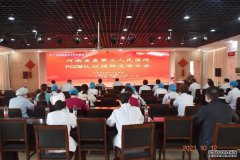千古商城 戴熙山水图(清)
(1801—1860)清代官员、画家。钱塘(今浙江杭工诗书,善绘事。四王以后的山水画大家,被誉为“四王后劲”,与清代画家汤贻汾齐名。 山水早年师法王翚,进而摹拟宋元诸大家,对于王蒙、吴镇两家笔意更有所得。晚年观摩巨然真迹,在用墨方面有深切的领会。道光时宫廷书画多出于其手。又能画花鸟、人物,以及梅竹石,笔墨皆隽妙。秦祖永的评论是:“临古之作形神兼备,微嫌落墨稍板,无灵警浑脱之致,盖限于资也。所写竹石小品停匀妥帖,尚为蹊径所缚,未能另立门庭也。”戴熙另著有《习苦斋画絮》,于画理多有论述。题画偶录行世。州)人,字醇士(一 作莼溪),号榆庵、松屏,别号鹿牀居士(一作樚牀)、井东居士。
(1801-1860) officials and painters of the Qing Dynasty. Qiantang is good at painting. The landscape painters after the four kings are known as the "four kings' aftereffect", which is as famous as Tang Yifen, a painter in the Qing Dynasty In his early years, Shanshui learned from Wang Hui and then imitated all the masters of the song and Yuan Dynasties, gaining more from Wang Meng's and Wu Zhen's brushwork. In his later years, he saw the true works of Juran and had a deep understanding of the use of ink. During Daoguang period, most of the palace paintings and calligraphy came from his hands. It can also draw flowers and birds, figures, plum, bamboo and stone. The ink is meaningful. Qin zuyong's comment is: "the works near the ancient times have both form and spirit. They are slightly disrespectful of ink falling, and they are not smart, alert, and muddleheaded. Therefore, they are limited to resources. The written bamboo and stone pieces are even and proper, but they are still bound by a new way, so they can't set up another court. " Dai Xi, another author of "study of kushai painting notes", has much discussion on painting theory. Inscribe paintings and record the world. State) people, the word Chun Shi (a work of Chunxi), No. Yu'an, Songping, No. Lu Yu Jushi (a work of Jushi), Jingdong Jushi.


戴熙山水木石,所作笔调清雅,墨色腴润,颇得江浙山川韵致。虽然也是从王翚一路入手,却能别出心裁。加上清末考据与金石学的兴盛,戴熙也融入了倡导碑学的潮流,在绘画中吸取了书法篆刻的长处,以金石入画,形成了一种极其微妙的、富有创造性的绘画风格。他的山水画用笔扎实,笔笔有入木三分之感,山岚河川也由于厚重的墨笔而罩上了老成的色调,形成了画面空旷的意境。
Dai Xi's landscape, wood and stone are elegant in style and rich in ink, which is quite charming in the mountains and rivers of Jiangsu and Zhejiang. Although it is also from Wang Hui all the way to start, but can be unique. In addition to the prosperity of textual research and epigraphy in the late Qing Dynasty, Dai Xi also integrated the trend of advocating epigraphy, absorbed the advantages of calligraphy and seal cutting in painting, and made epigraphy into painting, forming a very delicate and creative painting style. His landscape painting has a solid brush, the brush has a sense of three-thirds of the wood, the mountain haze River also because of the thick ink and covered with the mature color, forming the picture of the open mood.
戴熙的山水画属“虞山”一派,因受奚冈的影响,所以他的画风也接近于“娄东”派,他的山水多用擦笔,山石以干墨作皴,然后以湿笔渲染,颇得物象的形象和神髓,世人谓之"蝉翼皴"。诗书画并臻绝诣,与汤贻汾齐名,曾入值南斋,屡邀宸赏。山水师法王翚,不袭其貌而纯雅过之,木石小品,停匀妥贴,亦工花草人物,偶作印亦有古趣。
Dai Xi's landscape painting belongs to Yushan school. Influenced by Xigang, his style of painting is similar to Loudong school. His landscapes are mostly scratched with brush, and the mountains and stones are chapped with dry ink, and then rendered with wet brush, which is quite the image and spiritual marrow of objects. People call it "cicada wing chapped". Poetry, calligraphy and painting have reached the acme of perfection. They are as famous as Tang Yifen. Once they were in Nanzhai, they often invited Chen to appreciate them. Wang Hui, the landscape teacher, is pure and elegant without following his appearance. The wood and stone pieces are well-balanced and appropriate. They are also made of flowers and plants. Even making seals has ancient interest.
- 上一篇:千古商城 中华民国三年壹元
- 下一篇:千古商城 广东省造双龙寿字光绪元宝
- 新闻
- 房产
- 汽车
- 娱乐
- 体育





















